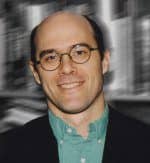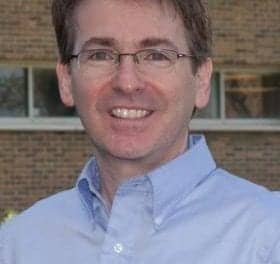
One of my favorite poems is Carl Sandburg’s The People Yes. In it, he writes: “This old anvil laughs at many broken hammers. There are men who can’t be bought. The fireborn are at home in fire. The stars make no noise. You can’t hinder the wind from blowing.” Essentially, the poem is a tribute to the resiliency of mankind, even if “the learning and blundering people will live on,” “they will be tricked and sold and again sold,” and all things great and small will be thrown at them.
In reading this month’s lead article by Jerry Northern, PhD, which provides an historical perspective on various attempts to change the traditional hearing aid delivery model, I couldn’t help but think of Sandburg’s poem. Our industry and its professions have witnessed wave after wave of new threats and opportunities, battled fiercely against each other on certain issues, learned and blundered, rushed down our fair share of blind alleys, and even at times have been guilty of standing on high moral ground to avoid the swift currents of change. But, through the decades, we have hammered out and forged an extremely robust and valuable systems in which patients can safely obtain exceptional devices and services.
This is not to say hearing healthcare can’t be improved. This month’s article by Amlani and Taylor (Three Known Factors That Impede Hearing Aid Adoption Rates) point out three potential areas for consideration. I think most people in our field would also concede that we need to improve consistency in the dispensing process (eg, real-ear measurement), find ways to get products into the ears of younger users (see this month’s HR and HRP articles that deal with micro-CICs), and anticipate the requirements of a burgeoning aging population by bringing more professionals into the field. Finally, with regard to the pricing concerns also addressed in this edition, we need for Congress to pass the Hearing Aid Tax Credit bill (see www.hearingaidtaxcredit.org) that would effectively reduce hearing aid costs by 25%—and provide the kind of break that most US citizens assume already exists for people with hearing impairment.
This month’s HR also features an interview with hi HealthInnovations’ CEO Lisa Tseng, MD, and chief audiologist Noreen Gibbens, AuD (read the interview). As I stated in this column in January—when HR published an article about the company’s At-Home and Clinic test versions—there is a great need to get all the facts on the table so we don’t end up viewing HHI as a kind of giant silent “bogeyman.” We need to understand the underlying technology and rationale behind HHI’s various models, so we can discuss them knowledgeably with patients, colleagues, and others. The publication of the January article by Dianne Van Tasell, PhD, led to a lot of valuable discourse, and our hope is that this month’s interview will also help clarify some of the activities and positions that HHI maintains.
Coincidentally, as this edition of HR was going to press, news broke that the FDA had issued a letter to HHI stating that it views the company’s online test as a “new device” that requires 510(k) premarket approval. HHI has since taken down that portion of its online test (see HR Online News). Thus, it should be emphasized that none of the authors or those interviewed in this edition of HR had knowledge of these more recent events.
HR welcomes Dr Van Vliet. This month, you’ll notice a familiar face in a familiar place—except in a different magazine. Dennis Van Vliet, AuD, has been writing columns for Hearing Instruments and Hearing Journal since the early 1990s. He is an audiologist who has owned and worked in a private-practice setting, as well as worked in educational audiology, a major research clinic, and industry; as an executive for a large dispensing network; and currently as senior director for professional relations at Starkey Technologies. From this wide range of experiences, Dennis has acquired a unique knowledge and perspective on hearing healthcare. Additionally, he and Michael Marion organized one of my all-time favorite events—the Jackson Hole Rendezvous—which took place in the autumn from 1992 to 2004 and, along with its featured Independent Hearing Aid Fitting Forum (IHAFF), greatly influenced how dispensing professionals approach nonlinear hearing aid fittings. The staff of HR welcomes Dr Van Vliet and his column, Van Vliet’s Final Word.




